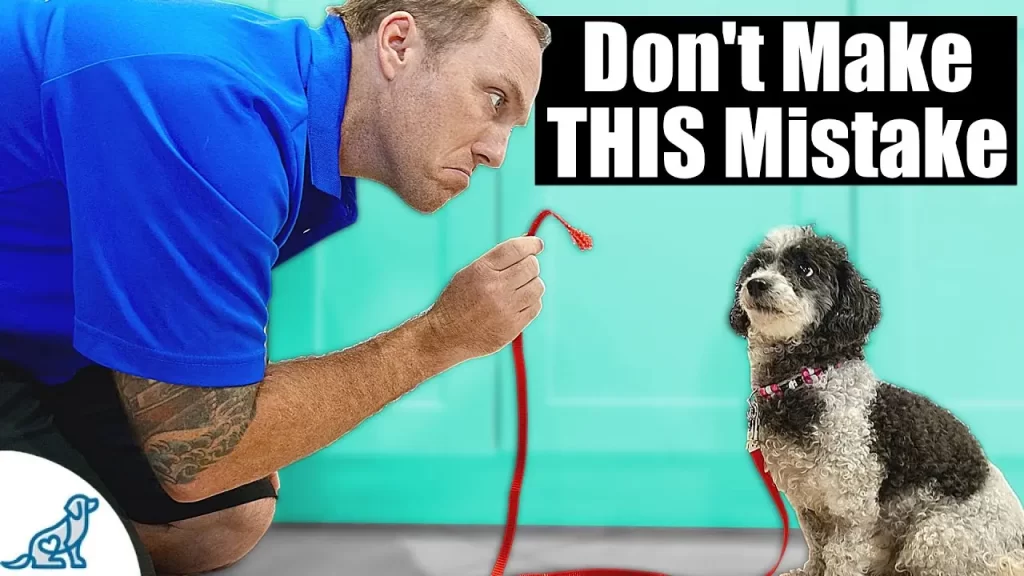
Should i keep my dog on a leash in the house?
The reasons for keeping dogs on a leash in the house are many, but some that came to mind when raising our newest puppy were: * Adhering to the existing safety rules in the home * Maintaining animal safety in your personal space * Preventing a current dog from harming a future one.
Teaching a dog to wear a leash is an easy way to train your pet manners. For example, you might start by teaching your dog to behave on the leash in their surroundings and then progress to more complicated commands like “leave it” or “stay.”
Training your dog can be effective in the long run but is difficult because the behavior has already been established.
It’s better to prevent unwanted behaviors with appropriate training techniques like time-outs, verbal commands, and “no” buttons.
To prevent misbehavior, you’ll have to have your tools ready, especially the leash.
I would like to emphasize the importance of gaining the right kind of training for your dog. Before you and your dog can properly socialize, you will want to use positive reinforcement techniques.
There are plenty of resources available online that will teach you how to do this correctly – such as taking classes and ordering books about training dogs.
Is it cruel to keep dog on a leash?
The question of whether it is cruel to keep a dog on a leash has been debated for years. Some people believe that the dog should be allowed to roam free and explore, while others argue that the dog should be kept on a leash at all times.
One argument against keeping dogs on leashes is that they are happier when they are allowed to roam free.
This is not true in all cases, as some dogs can get aggressive when they are kept on a leash and many people prefer them to be kept on leashes when they are in public places.
Should i let my dog roam the house when im home?
If you’re doing an in-person training session with your dog, then yes, 100%! This helps reduce distractions and the risk that they wander away from the location or that they might get injured. It also ensures their full focus is with you.
If you’re not actively in a session, I would keep them supervised, but not connected to you. We don’t want our puppies to inadvertently think the only acceptable place for them is right next to you.
It’s good to let them roam around and explore the world – if they are not well-trained, then you should watch over them. A leash should be nearby in case they have an accident when they’re wandering by themselves.
Leashes and lines can contain your puppy while they are outside but they should always be taught that their home is one place where they should listen to you, not the leash or harness. This will help them avoid tangles and restraints which could lead to a disaster.
Be sure to practice heel & loose leash walking with your dogs at home before taking them out for walks.
We recommend only doing this for short periods of time to help them grow accustomed to a new behavior.
The first thing you want to do is establish a non-verbal command that means “come” and “stay.” That way, you’ll be able to use them outside on-leash.
How long should I keep my dog on a leash in the house?
Dogs that are in the house on average take up to about 18 months before they’re fully trained to be taken off a leash in the house.
I have training and playing times for pets, but I’m more strict about when I’m actively watching them. When you need to focus on something else, your pets should go to their playpen or crate.
How do you leash train a dog in the house?
Leash training is a process of teaching your dog to walk on a leash. It is important to teach your dog the right behavior in order for them to be safe and happy.
The first step in leash training is teaching your dog how to walk on the leash. The next step is teaching them how to sit, stay, and come when called. You should start off with taking walks around the block with your dog before you try this at home.
How do you control a dog in the house?
Dogs are man’s best friend and they are always happy to see their owners. But, what if you want to control your dog in the house? Let us find out how you can easily control a dog in the house by using these simple tips.
Control a Dog In The House: Tips To Keep Your Dog Safe And Happy
- Keep your dog on a leash when out of the house and away from other pets or children.
- Control your dog by using positive reinforcement such as treats or praise when it behaves well.
- Use a crate for time-outs when needed for safety reasons.
Dogs use body language to communicate with people. They will wag their tails, lick their lips, or turn their heads away from you if they want something from you.
When it comes to controlling a dog in the house, it’s important to understand that dogs have different personalities and temperaments.
Some dogs are more stubborn than others and will not listen unless they are forced into submission. Other dogs just need a little bit of encouragement before learning new commands.
Do dogs mind being on a leash?
Dogs are very social animals and they want to be with their owners. They get stressed when they are away from their owners or when they are on a leash. This stress can lead to behavioral issues such as excessive barking, chewing, and digging.
Dogs can also develop a habit of pulling on the leash which is dangerous for both the dog and the owner. Dogs should have some freedom to roam around without being restrained by a leash.
10 reasons to leave the leash on your dog in the house:
- You’ve got the leash when you might have to run for the door quickly in order to avoid an accident. Stop and think before an emergency again.
- A way to prevent your dog from chewing up your favorite furniture is to train it using click and release training. By clicking on the ground when you want the pup to stop, you can let them know they’ve reached their limit without physically needing to put them on a leash.
- When your puppy is on top of your older dog for a rumble, it’s time for a break.
- A leash creates a space for dogs to play by creating a “safe zone”.
- When a visitor comes by your house, you’re ready!
- A kitchen leash is often used to help teach when you’re cooking. It’s there to keep your dog and the other people in your kitchen safe.
- Your dog will also benefit from regular leash training. This will teach your pup to stay where you have given them permission & go ahead and chill out when you give the “place!” command & reward accordingly.
- Teaching your dog to fetch using the leash is a skill in itself and will take some time to master.
- It is helpful in the training process to provide your dog with a designated area where they need to stay when something dangerous might happen. In this case, it may be for them an uncomfortable experience if they were ever forced into doing something outside of their designated zone.
- That leash will help you manage the dog on your lap when it’s getting out of control.
Conclusion:
This article discusses the pros and cons of keeping your dog on a leash in the house. The article also discusses how to train your dog to walk with a leash.
The conclusion of this article is that you should keep your dog on a leash in the house if they are not trained to walk without one. You should also train them to walk with a leash before bringing them into the house.
This article is based on personal opinion and experience, so it can be subjective in nature.
The answer to this question is not simple. It depends on the type of dog, its personality and your lifestyle.
